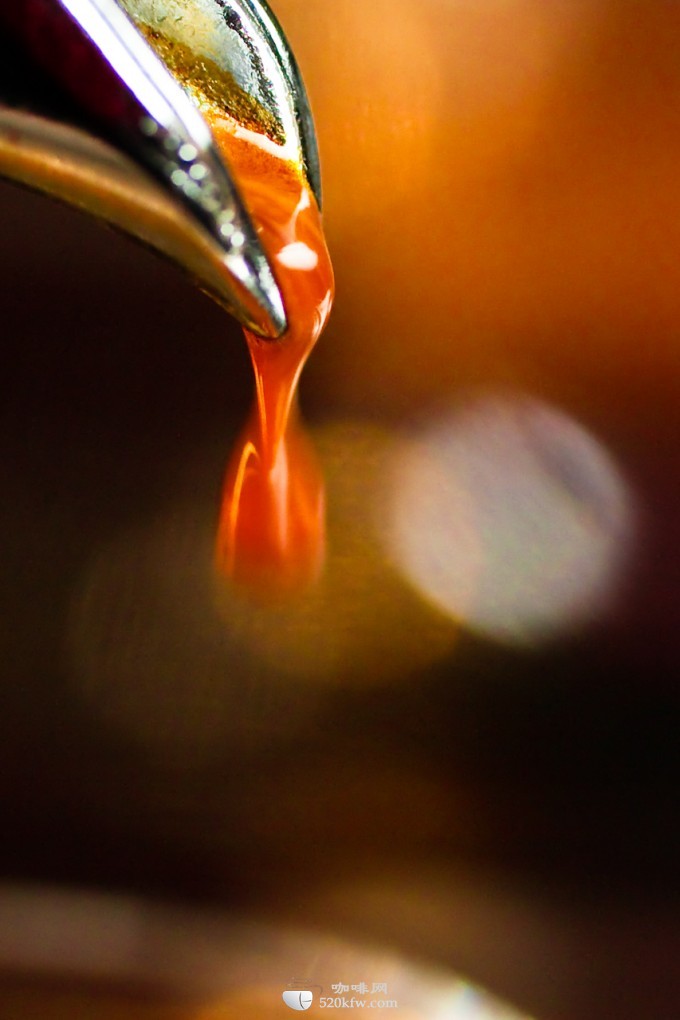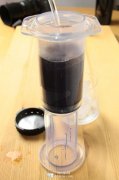Coffee Common sense Italian Coffee espresso extraction method

The golden rule of an ideal espresso indicates the extraction time and the amount of extraction. The golden rule is a good guideline, but in many cases, color is a better indicator of grinding thickness and whether the packing is correct or not.
When using a "normal" cooking handle, you can also get a lot of symptoms by carefully observing the flow from the diversion head. Color can give you a clear signal of when to stop the extraction, and remember that the tiger grain will fade with the time the beans are placed. Also remember that decaffeinated coffee has very small stripes; decaf beans tend to be darker and more uniform at first and turn golden earlier than caffeinated beans. Of course, the stripes of freshly baked beans are darker when they are cooked. Depending on the formula of the mixed beans, you will get the best results four to ten days after baking.
Although stopping extraction when golden yellow appears will get you a cup of the best espresso, correcting inappropriate extraction itself can lead you to a better espresso. If the extraction is too slow, the espresso will be more bitter and the dark brown crema;. If the extraction is too fast, the espresso tends to turn sour and the crema will all turn cinnamon. Tasting is the ultimate guide to correct all kinds of mistakes (grinding, packing, and temperature). Keep practicing and get good cooking is basically a skill. Divide the material, powder, fill and press. Repeat, let's assume that the cooking pressure of your espresso machine has been adjusted correctly and that the cooking temperature is correct. I suggest setting the cooking pressure to 82. When you get to 9.5bar, set the cooking temperature to 202 degrees Fahrenheit as a good starting point. Suppose you have chosen a good coffee mill and fresh espresso mixed beans, and now the final result depends on the extraction. Within 25 seconds of boiling a cup of espresso, a lot can happen. If you have a standard cooking handle, your observation is limited to the flow of water in the water divider. The bottomless cooking handle provides a new and favorable perspective for this process.
Before entering into the common extraction defects, I will briefly talk about how to correctly prepare the coffee to be extracted. Basically based on the skills mentioned in his article Espresso Packing Techniques: Update 2004 by the owner of David Schomer,Vivance, an influential barista trainer. The first page of the online article is a step-by-step reference card, and the scanned text is more difficult to read, so I excerpt part of it below, starting with the third picture:
1. There is a small pile of freshly ground coffee in the powder bowl
two。 After filling up all the lows, push the coffee towards 12:00
3. Now, at the top, push the coffee with your fingers toward six o'clock.
4. Push the extra coffee to the middle of the powder bowl and repeat the above steps
5. Under a pressure of 40 pounds. Turn and flatten when lifting the powder press
6. Gently side-tap; notice that the cooking head is lifted from the table.
7. Using bathroom scales to train operators can use 40 pounds of pressure powder.
8. When finished, press down with 20 pounds of pressure and turn the powder press clockwise to smooth the coffee powder.
Using the above steps as guidelines, let's review the distribution, distribution, and packing in a little more detail.
Important Notice :
前街咖啡 FrontStreet Coffee has moved to new addredd:
FrontStreet Coffee Address: 315,Donghua East Road,GuangZhou
Tel:020 38364473
- Prev

Coffee making method iced coffee with ice and mellow taste
[English name]: Angel Coffee [English name]: Caf Beso de Angel [ingredient]: 50ml of deep-roasted chilled coffee, 10ml of Jialuhua Coffee Wine, 20ml of fresh cream, 1 wine-flavored cherry [preparation]: freeze the glass beforehand. Pour in the coffee wine and coffee, pour the whipped cream gently on top with a teaspoon, and be careful not to stir it. Use a toothpick
- Next

Coffee common sense recommends several classic coffees
Pure single coffee: hot iced coffee production method: HARIO siphon single coffee we provide table service 1: Jamaica Blue Mountain Coffee Bean Origin country: Jamaica Blue Mountain Coffee Bean Import country: Spanish roasting method: medium roasting flavor: very strong flavor, lasting fruit flavor the Blue Mountain coffee beans used by our store are the only authorized GR in China.
Related
- Beginners will see the "Coffee pull flower" guide!
- What is the difference between ice blog purified milk and ordinary milk coffee?
- Why is the Philippines the largest producer of crops in Liberia?
- For coffee extraction, should the fine powder be retained?
- How does extracted espresso fill pressed powder? How much strength does it take to press the powder?
- How to make jasmine cold extract coffee? Is the jasmine + latte good?
- Will this little toy really make the coffee taste better? How does Lily Drip affect coffee extraction?
- Will the action of slapping the filter cup also affect coffee extraction?
- What's the difference between powder-to-water ratio and powder-to-liquid ratio?
- What is the Ethiopian local species? What does it have to do with Heirloom native species?

